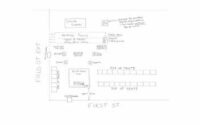250-foot asteroid whizzing towards Earth today at 29381 kmph, NASA warns
An asteroid strike has always been one of the scariest nightmares for Earthlings! You must have heard about the Chicxulub impact around 65 million years ago, which is believed to have caused mass extinctions, including that of the dinosaurs. Apart from this, in 1908, an asteroid entered the atmosphere and struck over Siberia. This is known as the Tunguska Event, which resulted in a shockwave that flattened around 80 million trees. If such an asteroid were to strike Earth today and that too in a crowded city, it would be of tragic and catastrophic nature for humanity! To know the danger in advance, NASA and other space agencies have been tracking these hazardous asteroids that stray very close to Earth.
NASA has now issued an alert against a giant asteroid 2020 BV14 that is expected to make its closest approach to Earth today. Should you worry about it? Read on.
Asteroid 2020 BV14 details: Danger to Earth?
NASA’s Center for Near-Earth Object Studies has named this upcoming asteroid as 2020 BV14. Its trajectory, distance of close approach, and expected speed have also been revealed by NASA’s JPL. Today, on April 16, Asteroid 2023 FS10 is hurtling towards Earth at a fiery speed of 29381 kilometers per hour. Measuring around 250 feet, which is as big as a skyscraper, the asteroid will pass by at a distance of 4.3 million miles, NASA’s JPL has revealed.
However, despite the close approach, it does not pose a significant risk to the planet as it falls outside the threat range for asteroids, as listed by NASA, which is when they come within 4.6 million miles and are larger than about 492 feet. Although, the distance between the coming asteroid and Earth is still way too far, but there is always a danger that something may cause it to deviate from its orbit and may make it head straight for our planet.
Tech tracking the asteroid danger
Some of the best technologies NASA has deployed to ensure a constant watch is kept on these dangerous asteroids includes optical and radio telescopes from which NASA determines the size, shape, rotation, direction and physical composition of these asteroids.
To detect the danger, NASA has established the NEO Observations Program, which is tasked with finding, tracking, and characterizing NEOs, and identifying those that may pose a hazard to Earth. Among the ground-based telescopes NASA uses to track asteroids are Pans-STARRS1 in Maui, Hawaii, the Catalina Sky Survey near Tucson, Arizona, while the space-based telescopes is NEOWISE.
Source: News


